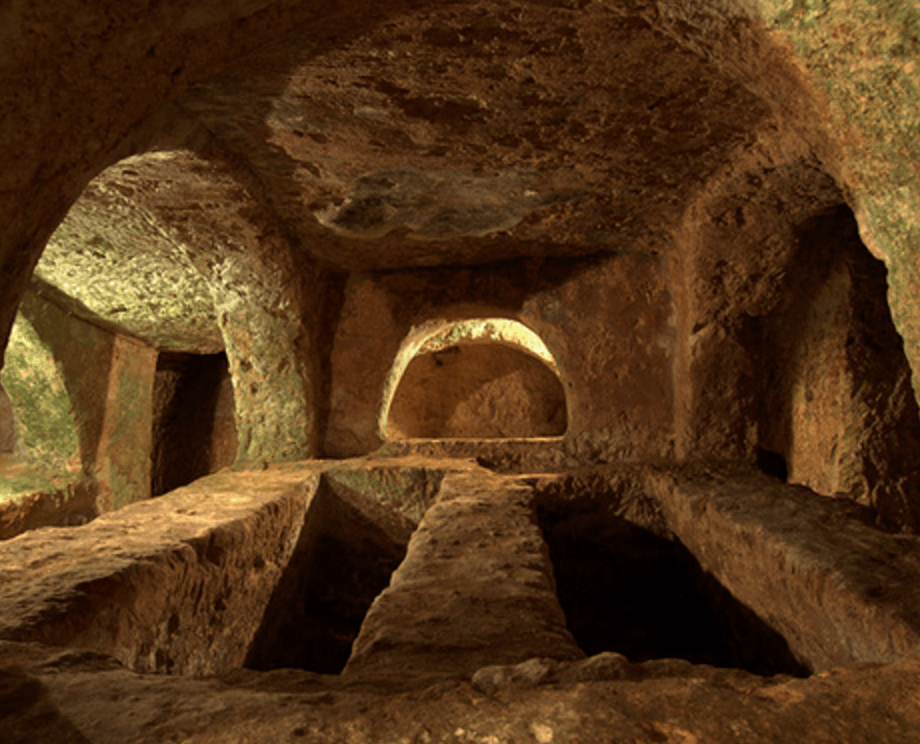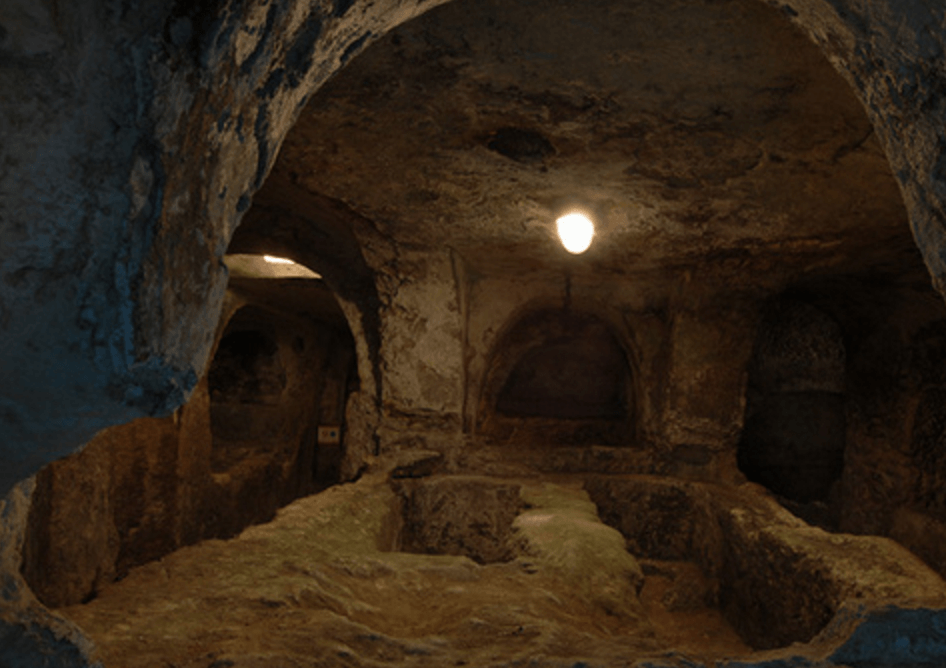Catacombs in Malta
Studies show that the catacombs situated in the Maltese Islands which are considered as paleochristian, rates as the fourth most important catacombs in the Mediterranean Region following those of the Italy, Israel and of the Maghreb. Till know archeologists has discover 22 catacombs around the island of Malta, the most well know being those of Saint Venera , Saint Augustine, Saint Katald, Tal-Mintna, Saint Agatha and also Saint Paul’s catacombs which we will be focusing on. From the names itself it can be pointed out the fact that in the past the majority of the catacombs where owned by the church and a limited amount of catacombs where owned by the government. The catacombs of Saint Paul and those known as the catacombs of Saint Agatha, are littered with more than 30 hypogea.

Saint Paul’s Catacombs
Saint Paul’s catacombs which Heritage Malta is in charge of are considered to be the most known and visited. The catacombs are situated at the outskirts of the ancient city of Imdina which today it is also referred to as the silent city. These catacombs are a typical complex of interconnected, underground roman cemeteries which date back to the 4th century AD, no wonder they are considered to be one of the main highlights of Malta. They are estimated to be the biggest Christian underground cemeteries which have approximately an area of 8000. When the pioneer of Christian archeology in Malta, DR, A.A Caruana, cleared and investigated the catacombs in 1894 it resulted that these catacombs are the only catacombs that look like the real catacombs which are situated in Rome.

As stated above the Catacombs of Saint Paul are littered with hypogea, indeed it appears that the catacombs had taken the shape after a number of minor hypogea. The catacombs of Saint Paul are divided into several parts, the biggest part covers approximately about 2000, indeed it is estimated that it contains a place for 2000 people. However, this does not necessarily mean that there are only 2000 people buried in that part, since when excavations where done in one tomb they found the bones of 5 different persons. Some of the tombs had been enlarged while others were linked. Moreover, some of the tombs where extended horizontally and others vertically, depending on the necessity.
When going down the stairs, the substantial amount of small tombs engraved in the walls are quite noticeable. Such tombs where used to bury babies and small kids in them, this is due to the fact that in the Roman period the mortality rate of babies and infants was quite high. The steps lead to an open hall with a C-shape stibadium at both ends. Further inside the catacombs one can find another hall which shapes like a rectangular church. These two halls are divided by the means of four pseudo-Doric columns joined together, both halls lead to a maze of corridors. On the side of the corridors there are graves of all type, the majority of the graves which are of canopied type have a place for two burials. The walls and floor are decorated with colored lines, symbols and graffiti. Such symbols and graffiti show that in the catacombs there was a mixture of religions as Jewish, Pagan and Christian.
On the other hand it is taught that the smallest part of the catacombs was used to bury either a doctor or a group of doctors together. Archaeologist came to this conclusion due to the several surgical instruments symbols that where found carved on a particular stone.
Although from the symbols found in the catacombs archeologists had gathered some information, a lot of information was lost due to the fact that unfortunately the skulls and the jewelry that they use to bury with the burials where stolen. From the 600 burials that study was made on only one skull was found.
There are several traditions and myths associated with these catacombs some of which are that in the past the catacombs where known and referred to as “ta dlam” and people had the fear that the ghosts will come out of the catacombs. One of the myths associated with the catacombs is that once during the “djar hanzira” era they let a pig loose in the catacombs and it come out in Floriana.
These catacombs do experience everyday problems, generally they range from problems arising due to the visitors and ticketing systems such as tickets issues and complaints to infrastructural problems mainly damages to the site such as leakages, and broken light bulbs. Indeed the site needs new systems that conserve the sites and improve the accessibility to a wider area and for those using the wheelchair.
With regards to the tourists there are no statistics regarding the nationality, however due to the tourist’s trends that are occurring in the island at the moment, the British tourists are slightly decreasing while the Spanish and Italian tourists are increasing. Generally, the peak time when tourists mostly visit the site is between 10 o’clock to 12 o’clock in the morning and between 2 o’clock to 4 o’clock in the afternoon. Mainly, the majority of the tourists that visit the catacombs are motivated by historic and religious purposes.
It is very important to note that a number of visits to the catacombs are held throughout the year. Indeed a substantial number of visits are related to the project that is currently being carried out at the catacombs. Moreover, every year an open day with the Domus Romana will be held at the 19th of March
Tourists/ Visitor Information
With regards to opening hours, the Catacombs are open every day from 9am till 5pm, the last admission being at 4.30pm. The catacombs are only closed on Christmas Eve, Christmas Day, New Year’s Eve and New Year’s Day. When it comes to tickets, prices for adults between 18 and 59 years of age is of 5 Euro, 3.50 Euro for youths aged 12 to 17 and also for senior citizens of 60 years and over, for children between 6 and 11, 2.50 Euro and infants enter free. Visitors are able to either pay by cash, by credit card or also by Malta Pass. They also have the opportunity to either take a tour of the catacombs by themselves by using audio guides or with the employees. On the way out, souvenir shop can be found were visitors can purchase something that will remind them of their experience at the catacombs.
The Saint Paul’s Catacombs is one of the most prestigious archaeological historic and religious site in Malta however with the excavations and new visitor centre project, it is expected that this will be a positive step for the catacombs where more new information will be discovered and it will generate more interest for the locals to visit and also for the tourists. It is important to note that the site attracts both historic and also religious tourists however, the majority of tourists visit for historic reasons. Therefore this shows that the catacombs attract a large number of tourists every year however till today it is not fully accessible so the upcoming projects will allow even more tourists to visit more new areas of the catacombs and provide a full experience to the visitor.
